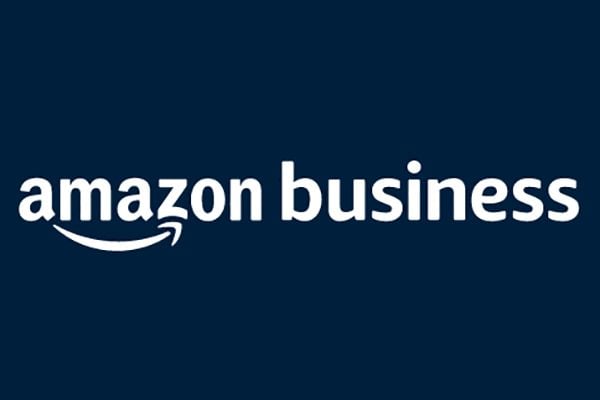During the pandemic lockdown, many brands and retailers thoughts turned immediately to launching on Amazon. Engaging one of the many Amazon agencies that popped up to meet demand was a short term emergency strategy but is it time to venture beyond Amazon? Alan Chester, VP of eCommerce at Luzern, certainly thinks so and in this guest post today sets out a multi-platform ecommerce selling strategy to meet changing customer buying behaviours.
Without a doubt, the pandemic lit a fire under ecommerce sales and has had a lasting impact on consumer behaviours. As reported by McKinsey, during the peak three months of Covid-19, the US ecommerce market saw ten years’ worth of growth. From a global perspective, retail B2C ecommerce sales stood at 18 per cent at the start of the pandemic and is forecasted to reach nearly 22 per cent by 2024.
For brands and retailers, Covid-19 was a driving force to reevaluate traditional business models, which for many was highly brick-and-mortar centred. During the lockdown, numerous brands began selling online for the very first time. This transformation was anything but easy, especially for sellers that lacked the experience and resources to take their brand online and required assistance from external Amazon experts to make the transition.
Brands need to be where their customers shop
Even as the brick-and-mortar world reopens, brands are continuing to optimise their digital ecommerce channels. A Forrester report states that 77% of brand decision-makers say that online marketplaces are growing faster than their traditional wholesale business. Since entering the age of ‘Commerce everywhere’, brands need to be available to consumers on their preferred shopping channel – be that on Amazon, a branded webstore, and/or on the many other big or niche online marketplaces emerging across the world.
These flourishing existing and new marketplaces give brands a unique opportunity to present their products to a new source of shoppers, enabling them to grow revenue and increase profitability. When brands expand their reach through a wider range of marketplaces, the natural byproduct is new customers and sales opportunities.
Why brands should look beyond Amazon
Why would brands look beyond Amazon? The better question may be – why not expand beyond Amazon? Although Amazon remains the dominant ecommerce platform, several other marketplaces have seen exponential growth. For example, throughout the pandemic, headlines such as ‘Walmart maintains growth with online sales up 37%’; ‘eBay reports better than expected results’ and ‘Best Buy’s incredible 2020 online sales’ made frontpage news.
The multi-marketplace phenomenon can also be traced to changing customer buying behaviours. Given that customers aren’t locked into a single ecommerce platform, they are using their purchasing power to express their desire to also support local and specialist marketplaces.
Going multi-marketplace de-risks the dependency on Amazon, a platform that can be inflexible as brands grow and prosper. Even established brands can face challenges such as losing control of pricing, margin pressure, list suppression, and the overhead of managing returns.
Selling products on multiple marketplaces provides brands with a cost-efficient – and sometimes free – way to perform A/B testing to determine the most effective approach based on the marketplace or the region. Multi-channel selling enables brands to gain first-hand knowledge about the marketplaces that are best suited to support their specific products and requirements.
Some ecommerce platforms that are actively investing to enhance and build out their capabilities include OnBuy and Debenhams in the UK, Allegro in Poland, and Bol in the Netherlands. Further, specialist sites like Zalando and ManoMano are building a complete fulfilment infrastructure, including warehouses and delivery mechanisms to become true competitors to Amazon and take control of the final mile of the customer journey.
What it takes to sell on multiple marketplaces
Adapting to today’s new and highly competitive multi-channel landscape is one of, if not, the most pressing challenge ecommerce brands face. For many brands, it’s not so much as making a leap from Amazon but bringing other ecommerce platforms – ones that have specific strengths such as exceptional customer service or in-depth product knowledge – into the sales mix.
This process should not be thought of as a straightforward expansion, but rather a cross-platform strategy that contains hurdles and new growth opportunities. To overcome these challenges and turn opportunities into sustainable, profitable, long-term growth; brands need to have a clear strategy, forge strong partnerships, and be agile enough to quickly pivot.
Seize the opportunities of multi-marketplace selling
Expanding into new marketplaces can be messy and a strategy that takes all aspects into consideration is required. To leapfrog the competition and improve profitability, brands must deliver best-in-class content, a memorable buying experience, and stand out in a crowded playing field with targeted marketing campaigns and enticing promotions.
Across multi-marketplaces, brands need to control their online brand presence, their image, and the customer experience. It is of critical importance that the product is presented consistently –across channels – in the most compelling manner, with high quality images, comprehensive descriptions, and carefully chosen keywords for search engine optimisation to build rankings and listings.
The move to multi-platform ecommerce selling is a growing trend, one that shows no signs of slowing. As more retailers transition to online sales and diversify to expand their reach, consumers will take notice and search for best pricing, quality products, and convenient shopping experiences. Success over the long term will require brands to develop a multi-channel strategy and advance beyond Amazon.










